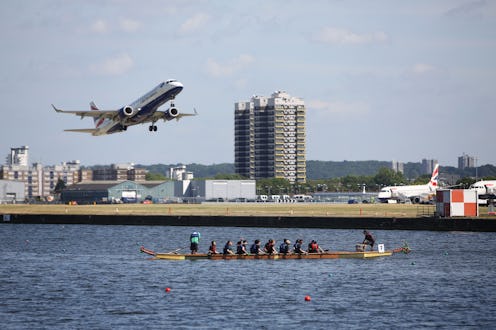News
How Does The San Fran Crash Prove Planes Are Safe?
It hasn't been the best week for aircrafts. First, we had the Boeing 777 crash in San Francisco, which apparently stalled, hit the runway at a bad angle, and burst into flames. The next day, ten people died in an air taxi crash in Alaska, and just yesterday, a Japan Airlines flight had to turn back and re-land at Tokyo after they found a leak in the hydraulic system. (We're not entirely sure what that is, but we know IT'S NOT GOOD.)
So why would you ever get back on board? Well, here are some rather positive revelations to come out of this tragedy that may reassure you:
1) This was the first major commercial crash since 2001.
The last crash by a major carrier was in November, twelve years ago. That's twelve years of spotless safety records. No other method of transport can say that. 2012 was the safest year on record for flying, and your chances of death by plane crash are now one in 11 million. Do you really think you're not just one in a million, but eleven bloody million?
2) Even though the plane has been described as "bursting into a ball of fire," only two of the 307 passengers aboard were killed.
We're not lessening the significance of the two confirmed deaths: tragedy is tragedy. But think about this: the plane literally hit the seawall, stalled, hit concrete, and burst into flames. And somehow, in a matter of seconds, hundreds of unprepared passengers escaped with their lives.
A few decades back, plane crashes were typically a non-survivable event—but now, regardless of what you saw in Final Destination 1, you'll probably survive even if you are involved in one. In fact, 95.7 percent of people involved in flight crashes survive them. (Tips to bump up your chances: sit at the back, and within five rows of an emergency exit.) Think about the Boeing 777 that crashed into London's Heathrow Airport five years ago—every single person walked away alive.
3) The last 30 years have seen life-saving design amendments to planes.
In the last three decades, some serious changes have been made to safety construction on planes. We've now got better-than-ever safety doors, fireproofing, protocols that work, exit chutes, and seat technology. "Thirty years of design improvements have made a huge difference in the ability to get everyone off the plane in less than two minutes," accident investigator and pilot Larry Rooney told Time.
Even though the Boeing 777 flight hit sea and runway at awkward, jarring angles, the seats stayed firm in the aircraft. Seats are designed now to withstand sixteen times the force of gravity. Sixteen!
4) You can survive falls from thousands of feet in the air.
No, seriously. Let's say the absolute worst happens and you're flung from a mid-air flight. People have survived, and you could too: if you hit a swamp or snow, you might just be a-okay. And what a story for the grandkids, too.
